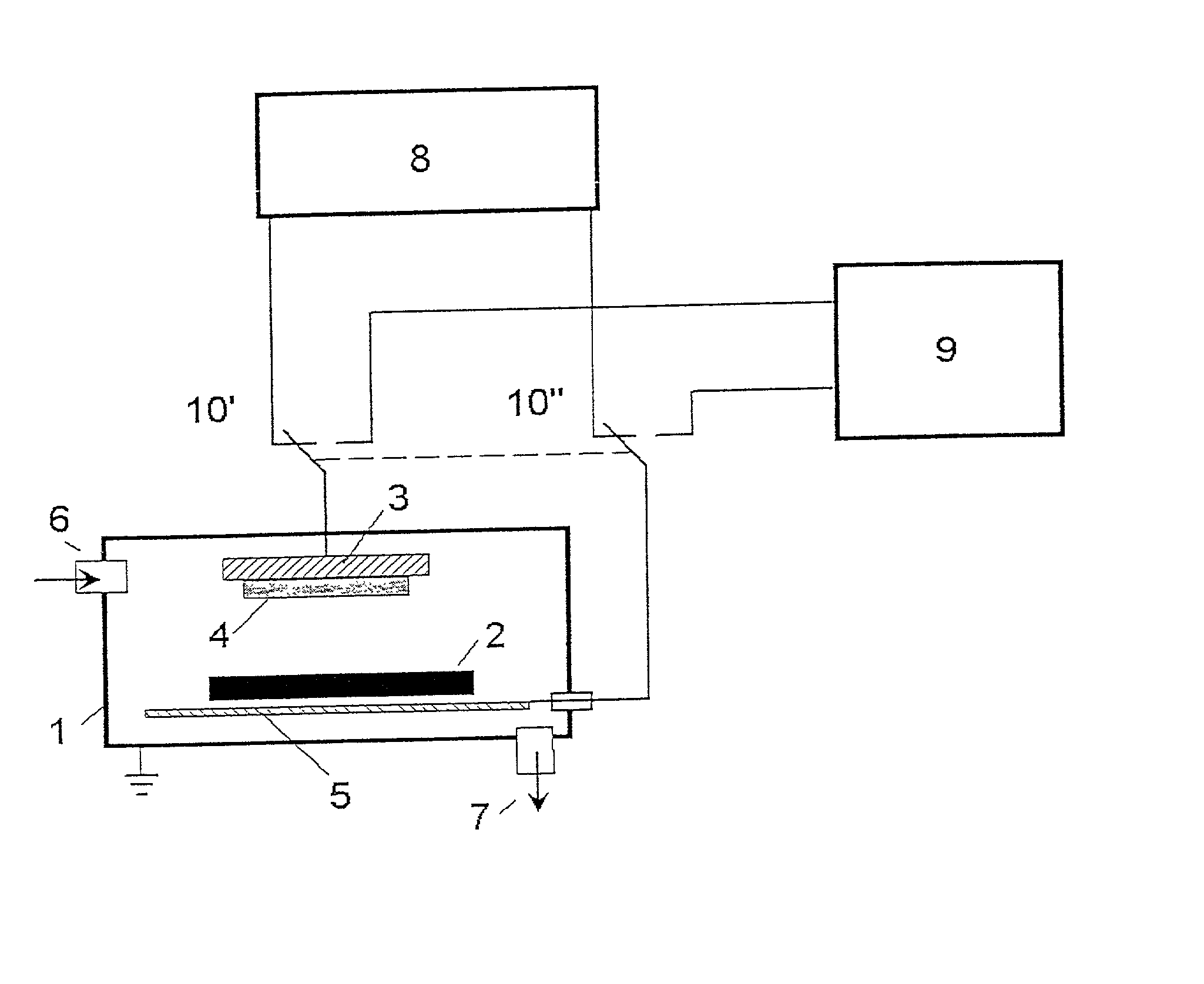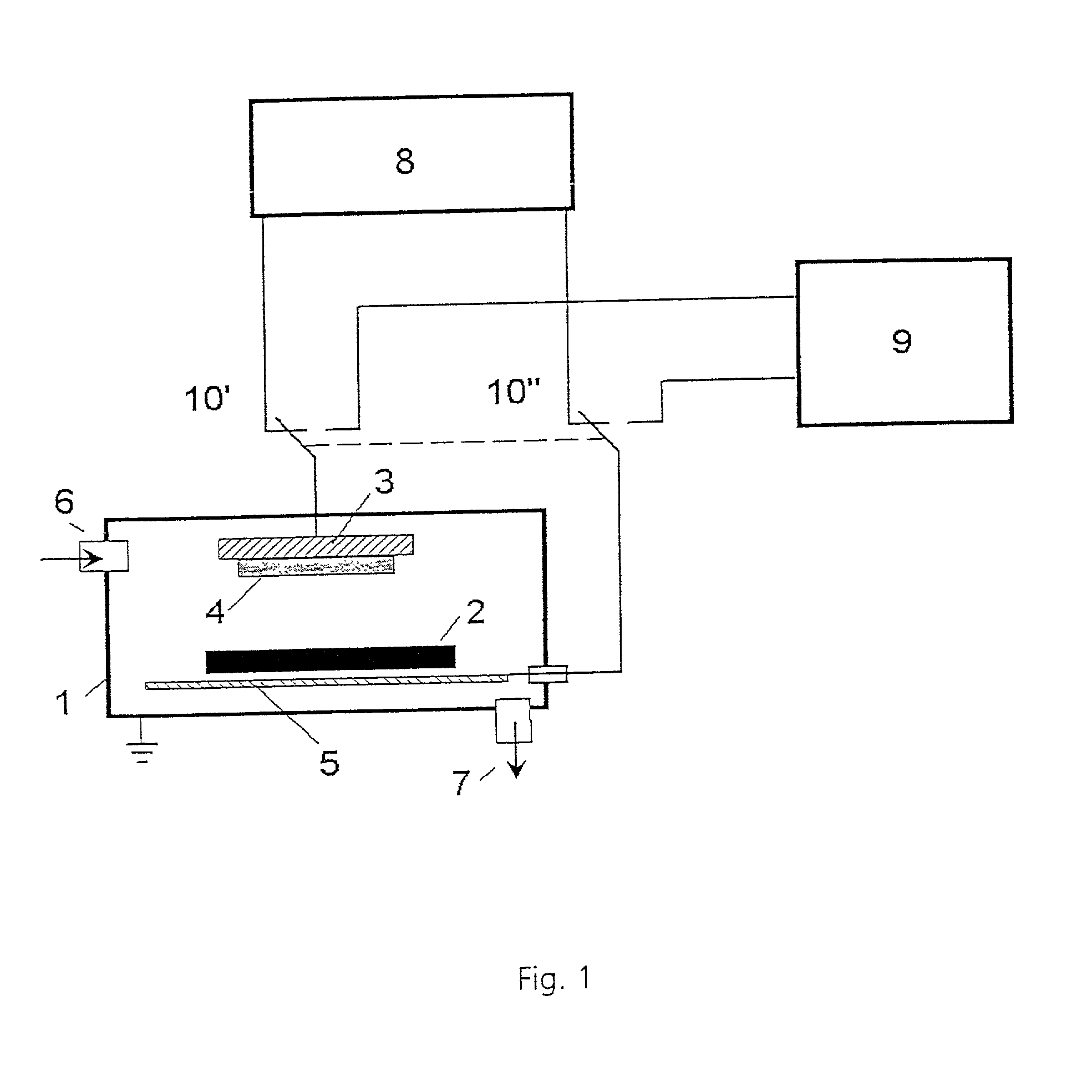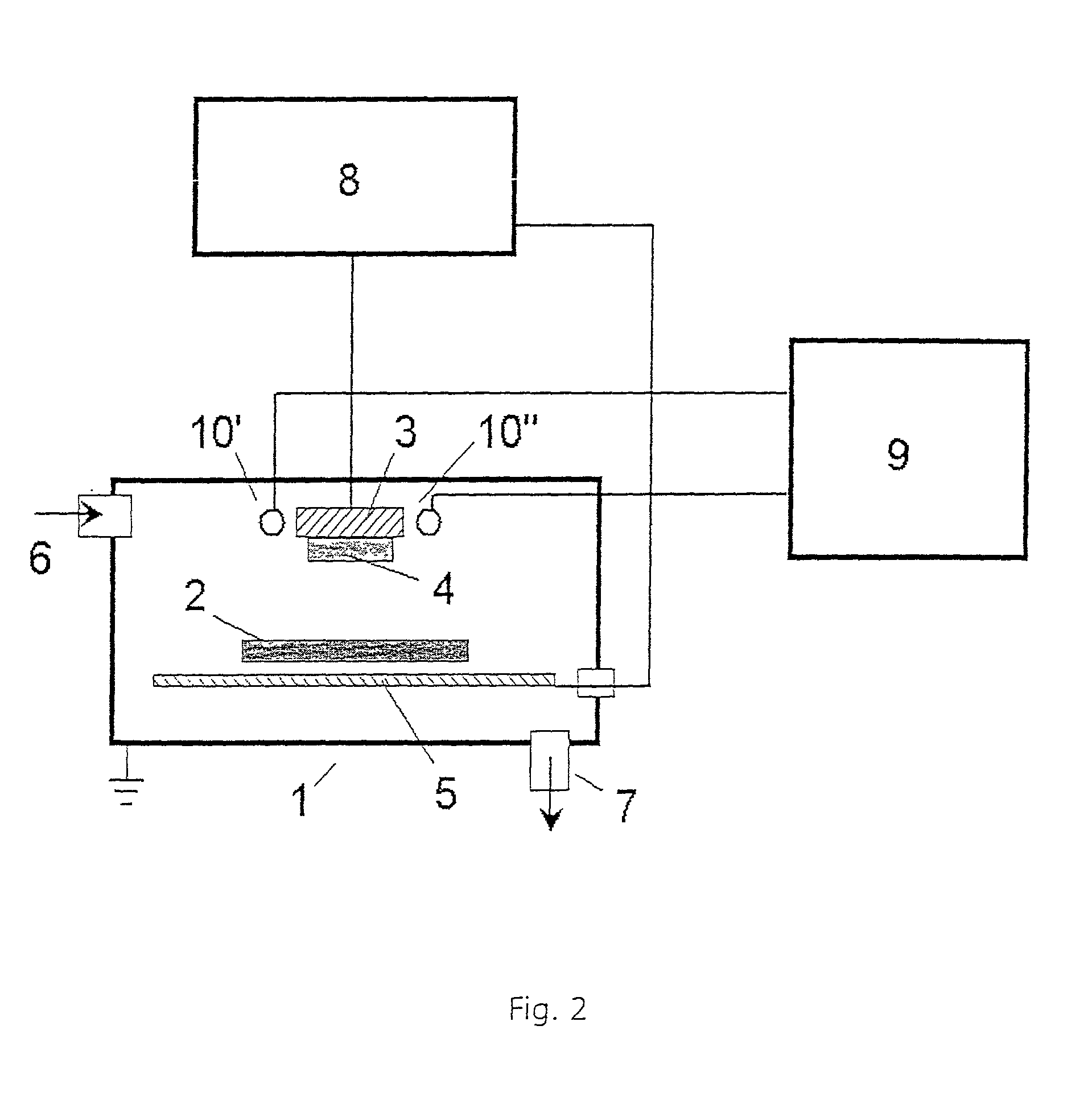Process and device for reducing the ignition voltage of plasmas operated using pulses of pulsed power
a technology of pulsed power and plasma, which is applied in the direction of electrodes, ion implantation coatings, chemical vapor deposition coatings, etc., can solve the problems of inability to arbitrarily reduce the electrical power applied, inability to apply arbitrary reduction, and inability to achieve the effect of reducing the electrical power applied
- Summary
- Abstract
- Description
- Claims
- Application Information
AI Technical Summary
Benefits of technology
Problems solved by technology
Method used
Image
Examples
Embodiment Construction
[0028] The particulars shown herein are by way of example and for purposes of illustrative discussion of the embodiments of the present invention only and are presented in the cause of providing what is believed to be the most useful and readily understood description of the principles and conceptual aspects of the present invention. In this regard, no attempt is made to show structural details of the present invention in more detail than is necessary for the fundamental understanding of the present invention, the description taken with the drawings making apparent to those skilled in the art how the several forms of the present invention may be embodied in practice.
[0029] FIG. 1 illustrates a sputtering device which is located in a vacuum chamber or vessel 1 of a vacuum coating installation, i.e., one which is used for depositing thin silver layers, e.g., between approximately 1 nm-10 nm, on a substrate 2 made of glass. The sputtering system includes a Magnetron 3 acting as a catho...
PUM
| Property | Measurement | Unit |
|---|---|---|
| frequency | aaaaa | aaaaa |
| frequency | aaaaa | aaaaa |
| frequency | aaaaa | aaaaa |
Abstract
Description
Claims
Application Information
 Login to View More
Login to View More - R&D
- Intellectual Property
- Life Sciences
- Materials
- Tech Scout
- Unparalleled Data Quality
- Higher Quality Content
- 60% Fewer Hallucinations
Browse by: Latest US Patents, China's latest patents, Technical Efficacy Thesaurus, Application Domain, Technology Topic, Popular Technical Reports.
© 2025 PatSnap. All rights reserved.Legal|Privacy policy|Modern Slavery Act Transparency Statement|Sitemap|About US| Contact US: help@patsnap.com



